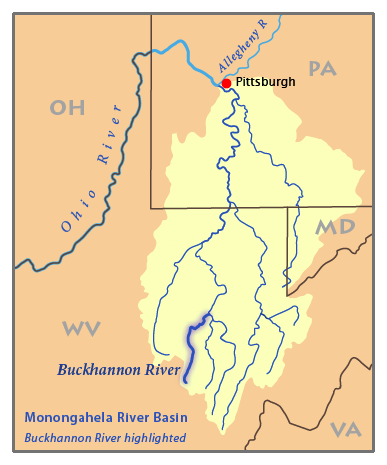Heavy Rain Washes 4,500 Tons of Crushed Coal into Buckhannon River
Local News from Station WDTV, News 5, Elkins, WV, July 20, 2023
MILL CREEK, W.Va (WDTV) – Officials say a violent rain storm on Saturday, July 15th, led to more than 4,000 tons of clean coal being spilled into the Buckhannon River.
The West Virginia Department of Environmental Protection, or DEP, says the storm damaged control structures at the Carter Roag facility in Randolph County and led to about 4,500 tons of clean coal being spilled.
DEP officials say most of the spilled clean coal made it into the left fork of the Buckhannon River and into the Tygart Valley River because of the area receiving nearly 2.5 inches of rain in an hour.
The DEP was notified of the spill Sunday night, and officials say crews were onsite the next morning.
Officials say the company made significant repairs by Monday morning. As remediation work continues, the DEP is overseeing the project. There have not been any visible impacts to aquatic life, including fish, observed since the spill occurred, DEP officials say.
The DEP says preliminary readings indicate the water chemistry in the streams remains mostly unaffected. The DEP also says they have issued three Notices of Violation to the company responsible for the spillage.
Although the company is not actively mining coal, officials say it operates a prep plant that is currently processing the last of recently mined coal. Once that is complete, officials say the plant will not be operational, leaving the remaining coal stockpiles to be shipped out by rail. The company will then begin cleaning up and reclaiming the area around the prep plant.
Because of the amount of coal fines spilled and how they were distributed along the banks of the affected streams, DEP officials say it is likely that future rain events will cause the material to continue washing downstream.

